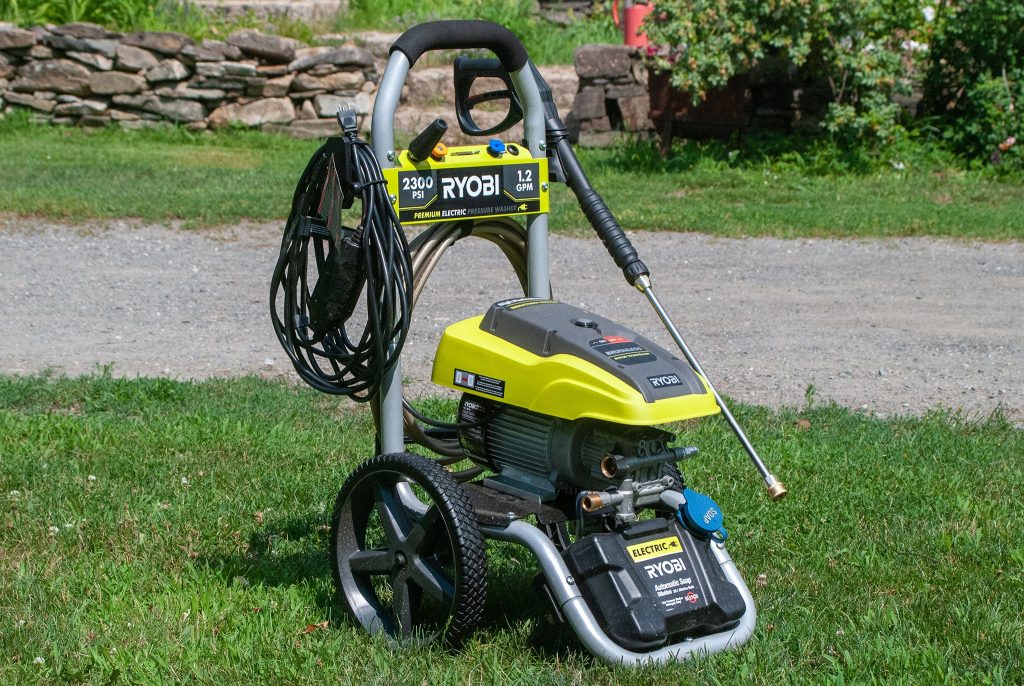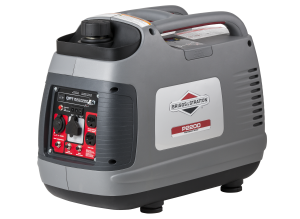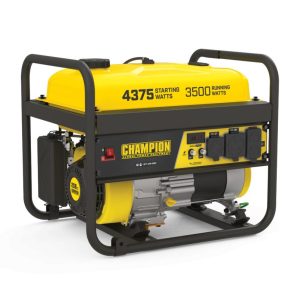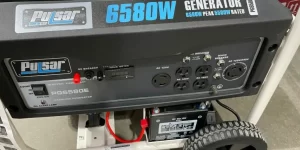Gas Leak in Your Generac Pressure Washer- Solved!
If you notice any gas odor or seepage from your pressure washer, have it serviced immediately.
You could be lucky and locate a damp spot that points to the source of the leak, or you might have to rely on your sense of smell because the gas has already evaporated.
A faulty carburetor bowl gasket or a blocked float or float needle can cause gas to leak from the carburetor of a Generac pressure washer. The gasoline tank, shut-off valve, fuel lines, and fuel filter might all start leaking.
Maintain proper ventilation wherever possible. Always take safety precautions when working with gasoline. Make careful to let the pressure washer cool down.

When troubleshooting, repairing, or operating machinery, be sure to read and follow all directions in the equipment’s operator’s manual. If you don’t feel confident in your ability to conduct the repair safely due to a lack of experience, training, or health, you should get some help from a specialist.
Table of Contents
Here Are the Top 5 Potential Gas Leak Locations for Your Generac Pressure Washer
1. Generac Pressure Washer Carburetor (3 places to look)
A leak might easily form in the carburetor. After leaving the gasoline tank, some fuel is temporarily stored here.
Varnish and deposits left behind by old gasoline might impede the performance of internal carburetor components.
There might be a leak in the carburetor, so be sure to check for a faulty bowl gasket, a blocked float, or a clogged float needle.
The Generac pressure washer’s carburetor bowl blew a gasket
First, check the bowl of the carburetor for any signs of leakage. A thin gasket is used to provide a tight seal between the carburetor and bowl. Like a skinny rubber band, this gasket is a seal between two surfaces.
After some time, this gasket usually gets hard and brittle. The gasket gets hot while the engine is running and cold when it is turned off because of their close proximity.
The gasket’s sealing capacity deteriorated as a result of the repeated stress of heating and chilling. A replacement carburetor bowl gasket should be purchased and installed if a leak is discovered here.
Carburetor bowl gasket replacement procedures:
- If it has a fuel shut-off valve, use it to turn off the fuel supply. The gasoline line can also be crimped with pinch pliers to stop the flow.
- Clean the carburetor’s exterior with a damp rag before taking the bowl off to prevent dirt from getting inside.
- If there is any gasoline left in the bowl, gather it using a towel or a small container.
- It’s possible to remove the fuel bowl’s contents using a screw on the carburetor’s side. If yours does, you may fix it by unscrewing it, dumping the gas into a container, then re-installing the screw. If it does not, then move on to the following section.
- The bowl of the carburetor may be removed by first unscrewing it.
- Get rid of the old gasket and swap it out for the new one.
- Put the carburetor bowl back in place.
- The screw that connects the bowl to the carburetor should be replaced.
- A second cleaning of the carburetor is necessary to eliminate any residual fuel.
- Make sure there is no further leaking coming from the carburetor by turning on the gasoline supply.
A float has been lodged in the carburetor of a Generac pressure washer
Locate the air intake port next and check for fuel leaks. If you discover a leak here, it may be due to a trapped float that is preventing the correct amount of gasoline from entering the bowl.
When the float in your carburetor gets stuck, fuel keeps pouring into the bowl and eventually spills out.
If you discover a stuck float in your carburetor, you’ll need to disassemble the device to figure out why it’s malfunctioning. If the float keeps getting stuck, try cleaning the carburetor.
The carburetor may need to be rebuilt or replaced before it can function properly again.
The Generac pressure washer’s carburetor float needle became stuck
The float needle in your carburetor should be the final item you inspect. To maintain gas flow into the carburetor bowl, the float needle coordinates with the float. The needle will need to be fixed if it becomes jammed.
You may either disassemble your carburetor and replace the float yourself, or take it to a small engine specialist.
2. Generac Pressure Washer Issues Caused by a Faulty Fuel Shut-Off Valve or Filter
There might be a fuel shutoff valve or fuel filter attachment on the underside of the fuel tank for your Generac pressure washer. If your pressure washer is leaking, it might be here.
The component might be metal or plastic. Leaks can occur in both types, so if you locate one, you’ll need to replace it.
There might be a sediment bowl and seal on the fuel shutoff valve. If there is leaking around the bowl, take it apart, clean it, and reseal it, if possible. If this isn’t the case, you should replace the whole valve.
A faulty gasoline shut-off valve or fuel filter in the tank joint should be replaced.
3. Pipes for a Generac Power Washer’s Gasoline
Drying out and cracking are natural consequences of time spent in storage for fuel lines. Over time, fuel will begin to leak out of the gaps. Replacement of gasoline lines is required if any cracks are found.
Make sure the hose is properly attached to the fuel system components and that there is no gasoline leaking from the connections, as well as checking the age and quality of the lines.
4. Pressure Washer from Generac Stops Working Due to a Leaky Gas Tank
A metal or high-density polyethylene fuel tank powers your Generac pressure washer. Both types are equally susceptible to leaking as they get older.
If the polyethylene tank’s seams break, gas will spill. Corrosion and rust spots from storing fuel in a metal tank might lead to a hole in the tank.
When a gasoline tank leak is discovered, a replacement tank should be installed immediately.
However, you might not have this choice if your vehicle has a metal tank and is an older model that is no longer produced. You can try patching up the damage.
Read more: Pressure Washer







